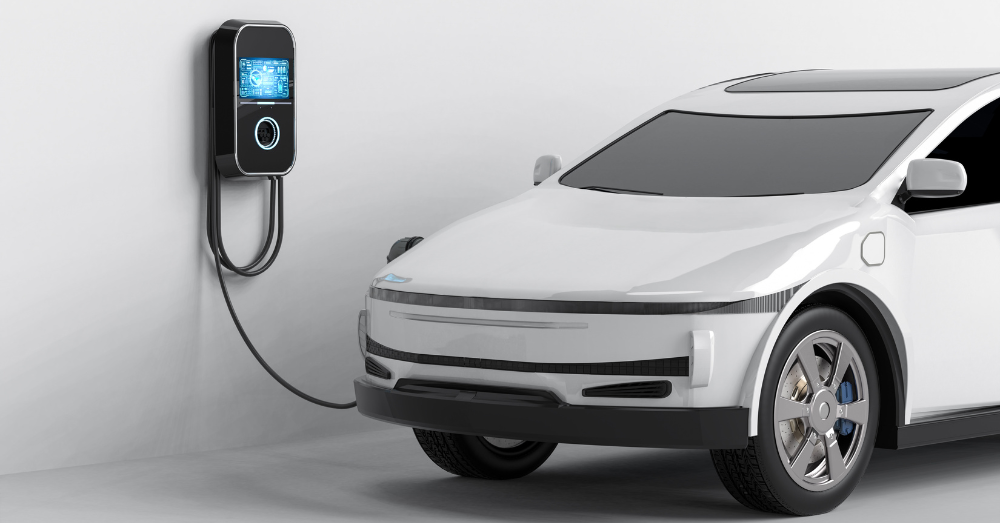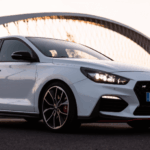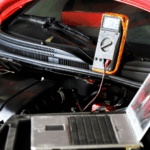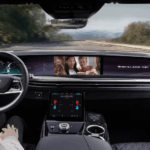Walk into any car dealership today and you’ll notice something different about the conversations happening. Instead of debating V6 versus four-cylinder engines, buyers are asking about kilowatt-hours, charging times, and whether they should go hybrid or fully electric. The automotive landscape has shifted dramatically, but what do drivers actually want when they’re shopping for their next vehicle?
- Fuel efficiency ranks as the top priority for 66% of car buyers, even outranking low price and safety concerns
- Hybrid sales continue climbing while electric vehicle adoption has plateaued due to affordability concerns
- Range anxiety remains a significant barrier, despite most daily drives being under 40 miles
The Fuel Economy Factor That’s Driving Every Decision
Here’s what might surprise you: fuel efficiency consistently tops buyer priority lists, with 66% of prospective car owners ranking it as their most important consideration. That’s higher than those who prioritize low purchase prices or even safety features. 89% of all Americans agreed that automakers should continue to improve fuel economy in new models.
But buyers aren’t thinking purely about saving money at the pump. Research shows they’re willing to pay $10,730 more for a vehicle that saves them $1,000 annually in fuel costs. That math doesn’t add up to immediate savings, which suggests something deeper is happening. People value fuel efficiency for reasons that go way past pure economics.
The catch? Patience for payback periods is running thin. Forty-three percent wanted to see the payoff within the first year, 29 percent said they would wait one to three years, and only 6 percent said they would wait three to five years for savings to materialize.
The Great Hybrid Versus Electric Debate
Walk through any parking lot and you’ll see the evidence: hybrids are having a moment while electric vehicle sales have hit some speed bumps. About 22% of light-duty vehicles sold in the first quarter of the year in the United States were hybrid, battery electric, or plug-in hybrid vehicles, with hybrid electric vehicles continuing to gain market share while battery electric vehicles and plug-in hybrid vehicles remained relatively flat.
The reasons aren’t complicated. Hybrids offer a sweet spot that many buyers find appealing – better fuel economy without the anxiety of finding charging stations or running out of juice on longer trips. Take the Honda Civic Hybrid, which delivers 48 mpg combined, or the Toyota RAV4 Hybrid at 40 mpg. These numbers represent real-world efficiency gains that buyers can feel immediately in their wallets.
Electric vehicles, meanwhile, are fighting an uphill battle against sticker shock. Almost half (48%) of the 7,500 respondents globally consider EV prices to be too high, even though they understand that most EVs inherently carry a price premium. The average transaction price for battery electric vehicles jumped from $55,500 in December 2024 to $59,200 in March 2025, while regular car prices actually decreased.
Range Anxiety Isn’t Going Away Quietly
Despite engineers’ best efforts, range anxiety continues to haunt potential EV buyers. This fear persists even though around 95% of car journeys are actually less than 25 miles and the average American drives fewer than 40 miles daily. Modern electric vehicles have plenty of range for typical use, with the median EV range now sitting at 270 miles compared to just 80 miles a decade ago.
The psychology runs deeper than pure logic. Many of us have experienced our phones dying at inconvenient moments, creating a learned behavior of constantly monitoring battery levels. That anxiety transfers directly to electric vehicles, making drivers nervous even when they have plenty of charge remaining.
Automakers are responding by pushing boundaries. Over 30 EV models now offer ranges above 300 miles, with some reaching 400+ miles per charge. Companies like Tesla have opened their Supercharger networks to other brands, and most major automakers have announced plans to have NACS ports in their new vehicles starting in 2025, opening up the Supercharger network to more EV drivers.
What the Market Is Really Telling Us
Looking at actual sales data reveals some interesting trends. One-third of Americans say they would seriously consider purchasing an electric vehicle, while 53% say they are not likely to do so. This split shows the market remains divided, with clear camps forming around different powertrain preferences.
The three main reasons people choose EVs or hybrids haven’t changed much: fuel savings (69%), environmental benefits (56%), and performance/driving experience (31%). What has changed is how these priorities rank against practical concerns like price, charging convenience, and long-term reliability.
Consumer willingness to buy an EV has waxed and waned over the last few years, dropping from 86% openness in 2021 to 67% in 2023. This suggests that as the initial novelty wore off and real-world challenges became apparent, buyer enthusiasm cooled somewhat.
The Technology That’s Actually Making a Difference
While everyone focuses on batteries and charging networks, some of the most impressive advances are happening in efficiency. The 2025 Hyundai Ioniq 6 is a standout in terms of efficiency, with 25 kWh/100 miles, but the more affordable 2025 Hyundai Kona Electric is comparable, with a 29 kWh/100 miles rating. These improvements mean you get more miles from the same amount of energy, whether that’s gasoline or electricity.
On the hybrid side, manufacturers have figured out how to extract impressive performance from smaller engines. The Nissan Rogue uses a turbocharged three-cylinder that produces 201 horsepower while delivering excellent fuel economy. The Ford Maverick hybrid returns 37 mpg combined – exceptional for any pickup truck.
Some companies are thinking outside the box entirely. Startup Aptera expects to deliver a solar-powered three-wheeled vehicle in 2025 that can add up to 40 miles of range daily just from sitting in the sun. While niche, innovations like this show how far efficiency improvements can go.
Where the Market Is Heading
The next few years will bring some interesting developments. More affordable electric models are finally arriving, with several manufacturers promising sub-$30,000 options after incentives. Tesla announced plans for a next-generation compact EV, while traditional automakers are racing to bring down costs through improved manufacturing and battery technology.
Hybrid technology continues evolving too. The upcoming Honda Prelude hybrid coupe represents a return to sporty, efficient vehicles that prioritize driving enjoyment alongside fuel savings. Meanwhile, plug-in hybrids are finding their niche among buyers who want electric driving for daily commutes but gasoline backup for longer trips.
The charging network is expanding rapidly, with the goal of 28 million EV chargers by 2030. As more locations offer fast charging and Tesla’s network opens to other brands, the practical barriers to EV ownership should continue falling.
Conclusion
What drivers really want from next-generation cars comes down to a few things: better fuel efficiency without sacrificing convenience, reasonable prices that don’t require huge upfront investments, and technology that makes their daily driving experience better rather than more complicated. Whether that comes from hybrid powertrains, fully electric systems, or improved gasoline engines matters less than delivering on these basic promises.
The market is sending clear signals. Buyers value efficiency above almost everything else, but they’re not willing to pay unlimited premiums or accept major inconveniences to get it. The winners in the next-generation automotive race will be the companies that figure out how to deliver maximum fuel efficiency at reasonable prices with minimal lifestyle changes required.
As technology continues improving and costs come down, the choice between hybrid and electric may become less important than simply choosing the most efficient option that fits your specific needs and budget.







Leave a Reply